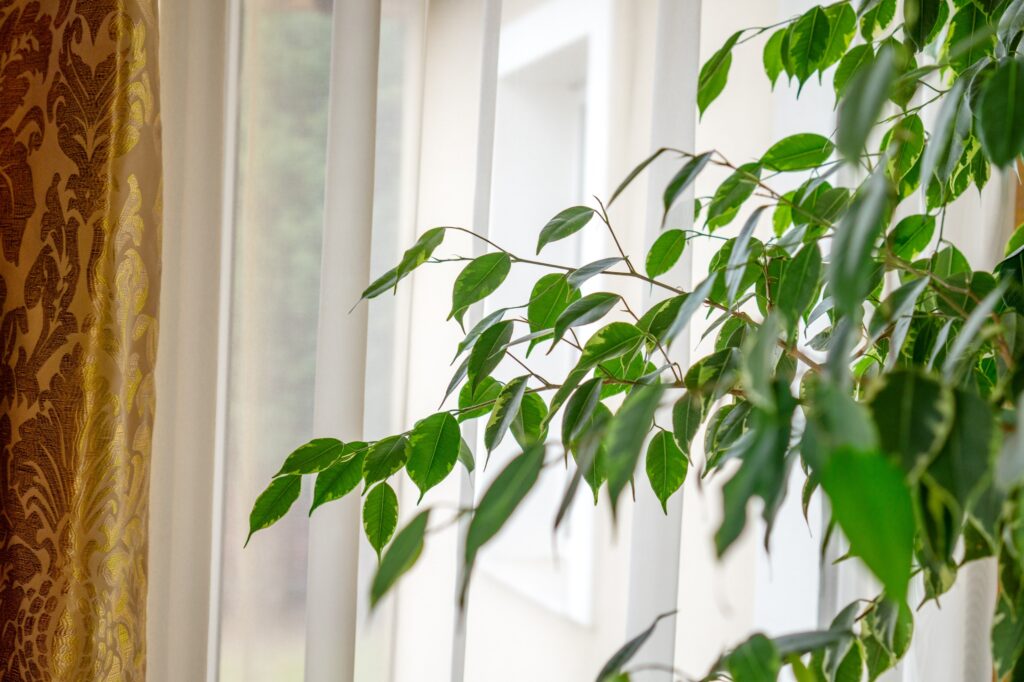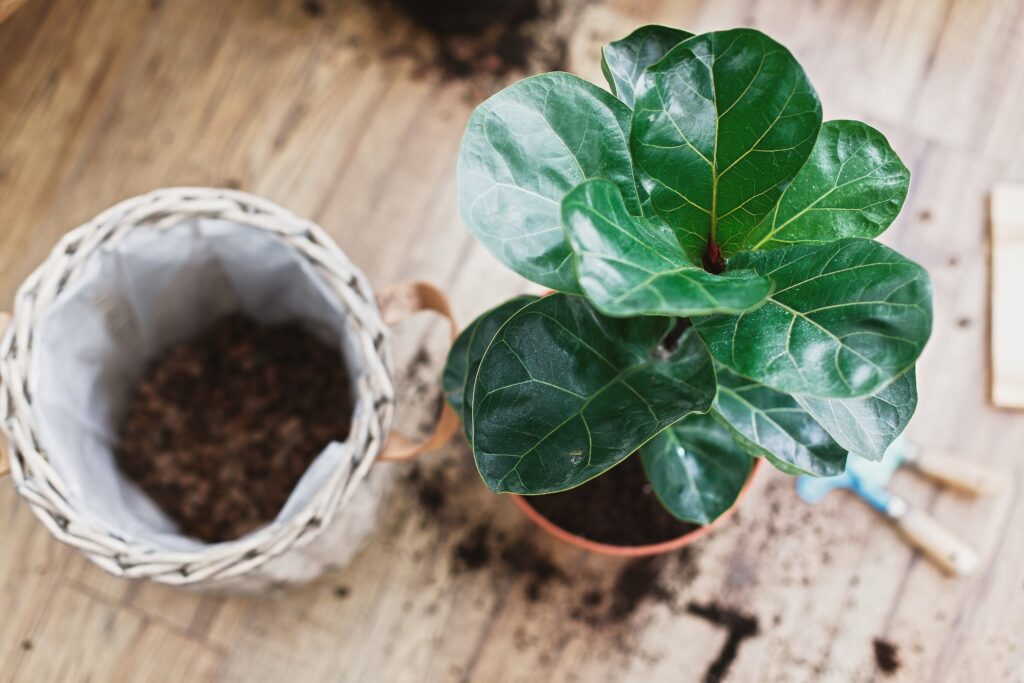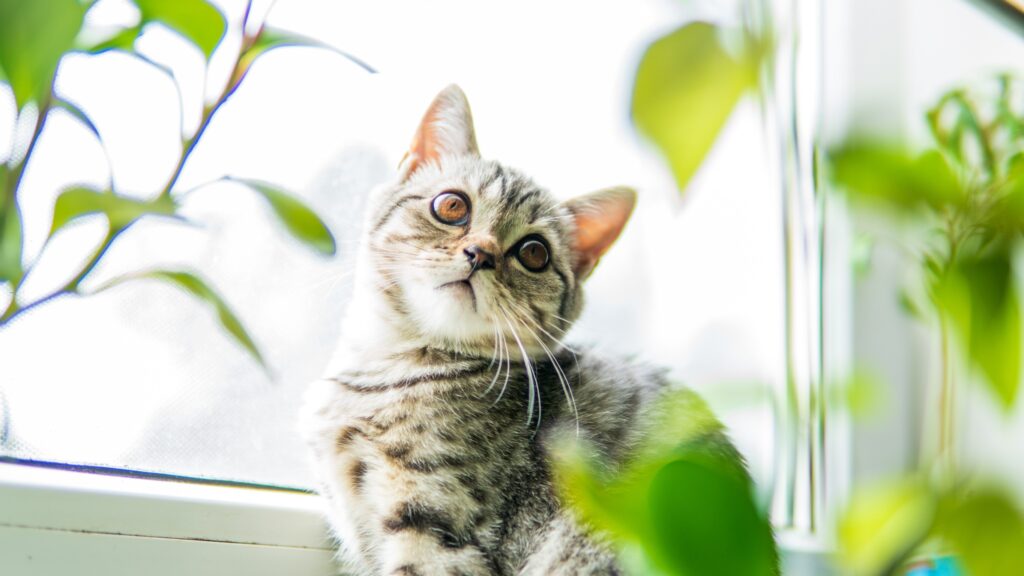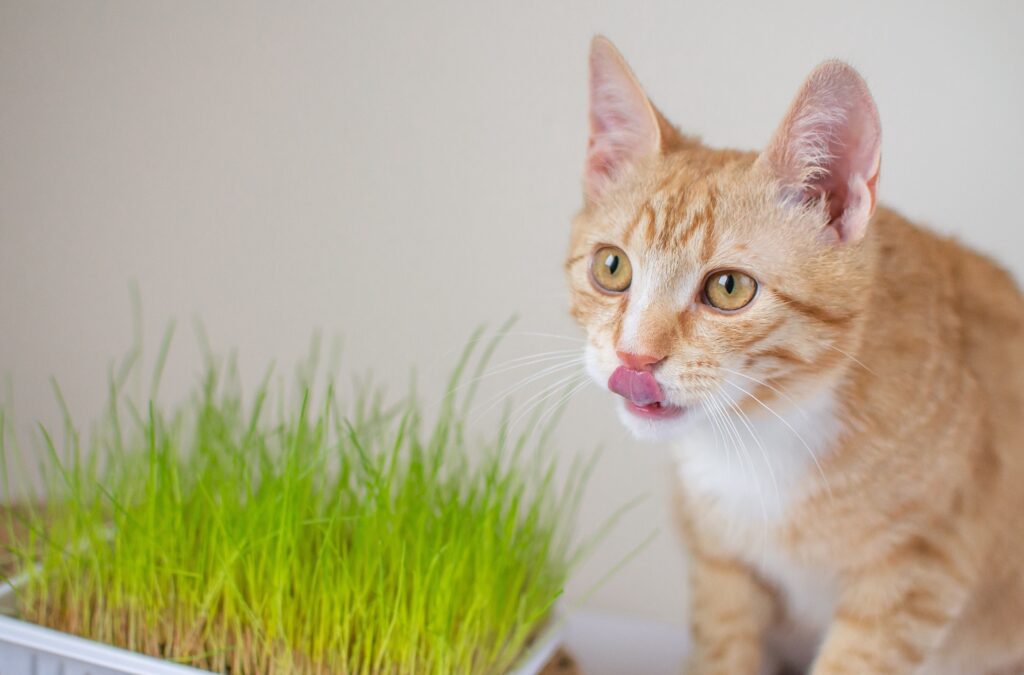In the cozy corners of many homes, nestled among bookshelves and brightened windowsills, you’ll often find lush, vibrant fig plants.
Particularly popular varieties such as the Ficus Benjamina (Weeping Fig), Ficus lyrata (Fiddle Leaf Fig), and others have captured the hearts of indoor gardeners thanks to their elegant foliage and ability to add a touch of green serenity.
However, for those of us sharing our homes with curious cats, a common question arises: Are fig plants poisonous to cats?
Understanding and separating fact from fiction is essential for keeping our pets safe and our homes happy. In this article we will do just that, providing you with the information that you need to maintain both healthy pets and beautiful indoor gardens.
What Are Fig House Plants?
Fig plants, part of the genus Ficus, are popular indoor plants known for their versatility, easy care, and visual appeal. Among the various species, a few stand out as particularly popular choices for home and office environments.
Ficus Benjamina (Weeping Fig)
- Appearance: Characterized by elegant, slender branches and glossy green or variegated leaves. Can grow up to 60 feet high outdoors, but is typically pruned to 3-6 feet indoors.
- Care Level: Requires moderate care, including consistent moisture and access to bright, indirect light.

Ficus lyrata (Fiddle Leaf Fig)
- Appearance: Known for its large, violin-shaped leaves, fiddle-leaf figs make a bold statement in any room.
- Care Level: Prefers bright, filtered light and can be more demanding in terms of watering and humidity.

Ficus elastica (Rubber Plant)
- Appearance: Features large, thick, rubbery leaves, often with a dark green or burgundy hue, making it a striking addition to indoor spaces.
- Care Level: Relatively easy to care for, needing only moderate light and occasional watering.

Ficus microcarpa (Ginseng Ficus)
- Appearance: Recognized for its thick, exposed roots and lush green leaves, often styled as a bonsai for a touch of nature-inspired art.
- Care Level: Quite hardy, requiring minimal care, making it suitable for beginners or those seeking low-maintenance plants.

Appealing Features of Fig Plants
Fig plants also offer numerous benefits for our indoor spaces. These include:
- Visual Impact: With their diverse leaf shapes, sizes, and colors, fig plants can complement any interior design theme, adding life and color to indoor spaces.
- Air Purification: Like many indoor plants, figs can help purify the air, removing toxins and improving indoor air quality.
- Adding Humidity: The transpiration process of fig plants can increase humidity levels in dry indoor environments.
- Versatility: There’s a fig plant for almost every type of indoor environment, from low-light corners to sun-drenched rooms.
- Ease of Care: While some species are more demanding, many fig plants are relatively easy to care for, making them suitable for a wide range of gardening skills.
Are Fig Plants Poisonous to Cats?
Cat owners that are also plant owners often ask whether fig plants are toxic or harmful to cats. The short answer is yes – certain species and parts of fig plants can be hazardous if a cat chews on or eats them.
The main concern lies in the white, milky sap produced by fig plants, which contains proteolytic enzymes that can cause irritation and inflammation when it comes into contact with the skin or mucous membranes.
Ingestion of large quantities can also lead to more severe symptoms, including vomiting and diarrhea.
Toxic Components of Fig Plants
A scan of published literature reveals an array of toxic or potentially toxic compounds contained in the sap of fig plants. This sap is in all parts of the plant except the ripe fig fruit, thus all parts are considered poisonous to cats.
Some of the compounds that are toxic or dangerous to cats include:
- Ficin: A proteolytic enzyme present in the latex (sap) of fig plants. While ficin has some use in human medicine, it is toxic to cats. Ficin can cause irritation to the skin and mucous membranes upon contact. If ingested, it can lead to oral and gastrointestinal irritation.
- Psoralens: These are organic compounds also found in the sap of fig plants. Psoralens also have use in human medicine. However, these compounds in their raw form can be harmful: when absorbed by the skin and exposed to ultraviolet light, can cause photodermatitis, leading to skin irritation, redness, and blistering.
- Calcium Oxalate: Another common compound present in fig plants and other plants like dumb cane, insoluble calcium oxalate crystals can cause extreme oral and gastrointestinal irritation if ingested. Symptoms include excessive drooling, vomiting, and the inability to swallow.

Symptoms of Fig Plant Poisoning in Cats
If a cat eats or touches a toxic part of a fig plant, it might show a range of symptoms of poisoning. The seriousness of these symptoms can differ based on how much plant material was consumed and which plant part was involved.
Here are common symptoms of poisoning in cats due to exposure to toxic fig plants:
Irritation of the Cat’s Mouth and Skin
- Oral Irritation: Cats may experience irritation and swelling of the mouth, including the lips, tongue, and gums, leading to excessive drooling, difficulty swallowing, or refusal to eat.
- Skin Irritation: Contact with the plant’s sap can cause dermatitis, characterized by redness, itching, and swelling of the skin. In severe cases, blistering or ulceration may occur, especially if the cat is exposed to sunlight after contact with the sap, due to the psoralens in the plant.
Vomiting and Diarrhea
- Vomiting: Ingesting parts of a fig plant can irritate the stomach lining, causing nausea and vomiting. This is the body’s way of expelling the toxic substance.
- Diarrhea: The gastrointestinal irritation may also lead to diarrhea, which can further dehydrate the cat and worsen its symptoms.
Other Gastrointestinal Symptoms
- Abdominal Pain: Cats may show signs of discomfort and pain, such as meowing plaintively, hunching over, or resisting abdominal touch, due to irritation or inflammation of the stomach and intestines.
- Loss of Appetite: Affected cats might lose interest in food due to nausea or oral discomfort.
Behavioral Changes
- Lethargy: Cats may become unusually quiet, withdrawn, and less active, indicating systemic distress.
- Pawing at the Mouth: This behavior may signal oral discomfort or an attempt to remove the irritating substance from the mouth.
Increased Salivation
- Excessive drooling can occur as a response to the irritation in the mouth and throat, and is often one of the first signs pet owners might notice.
Difficulty Breathing (in severe cases)
- If the swelling from the irritation is severe enough, it could potentially obstruct the airway, leading to breathing difficulties.
The good news is that while these symptoms may be distressing for both you and the cat, fig plant poisoning is rarely fatal.
But it can still make your cat very sick, so prompt veterinary care is usually required to alleviate symptoms, relieve your cat’s pain and discomfort, and get it back to its usual happy and healthy self.

What to Do If Your Cat Is Poisoned by a Fig Plant
If you suspect your cat has been poisoned by a fig plant, taking immediate and appropriate action is important to minimize the effects of the toxin and ensure the best possible outcome for your pet.
Here are practical steps to follow:
Immediate Steps at Home
- Remove the Plant: Ensure that the cat no longer has access to the fig plant to prevent further ingestion or contact.
- Identify the Plant: If possible, identify the specific type of fig plant involved. Knowing the exact species can help the veterinarian provide more targeted care.
- Observe Symptoms: Take note of the symptoms your cat is exhibiting. Information about the onset and progression of symptoms can be valuable to the veterinary team.
- Offer Fresh Water: Provide your cat with fresh water to help dilute the ingested toxins and prevent dehydration, especially if vomiting or diarrhea is present.
- Do Not Induce Vomiting: Unless specifically instructed by a veterinarian, do not attempt to induce vomiting in your cat. This could cause additional complications.
Contacting a Veterinarian
- Call Your Vet Immediately: Contact your veterinarian or an emergency pet hospital as soon as possible. Explain the situation, including the type of plant ingested, the amount (if known), and the symptoms observed.
- Follow Professional Advice: The vet may offer specific instructions over the phone. Follow these instructions carefully while preparing to transport your cat to the veterinary clinic.
Veterinary Treatment
Once you reach the veterinary clinic, the veterinarian will assess your cat’s condition and may administer one or more of the following treatments, depending on the severity of the symptoms and the specific toxin involved:
- Decontamination: If the ingestion was recent, the vet might induce vomiting to remove the plant material from the stomach or administer activated charcoal to absorb the toxins.
- Intravenous Fluids: To prevent dehydration, especially if vomiting or diarrhea has occurred, and to support kidney function, the vet may administer IV fluids.
- Medication for Symptoms: The veterinarian may prescribe medications to alleviate specific symptoms, such as anti-nausea drugs, antihistamines for allergic reactions, or pain relievers.
- Skin Washing: If there is skin irritation from contact with the plant’s sap, the affected area may be washed thoroughly to remove any remaining irritants.
- Monitoring and Supportive Care: In severe cases, hospitalization may be required to closely monitor the cat’s condition and provide supportive care until the toxins have been fully metabolized and the symptoms have resolved.
Prevention Tips
Prevention is always the best cure. If you have fig plants in your home, here are some tips to keep your cat safe and sound:
Prevention Tips for Cat Owners
- Elevate Plants: Place fig plants and other toxic plants on high shelves or in hanging baskets well out of your cat’s reach. Cats are agile climbers, so ensure these locations are truly inaccessible.
- Use Plant Covers: Consider covering the soil of your plants with decorative rocks or netting to deter cats from digging in the pot. If they are not attracted to the dirt in the pot, they are less likely to notice and be tempted by its leaves.
- Create a Barrier: Use pet or baby gates or plant stands to create a physical barrier around your plants, making it difficult for your cat to access them.
- Provide Cat Grass: Grow cat grass (wheatgrass) in a separate pot to divert your cat’s attention from other houseplants. Cats often chew on grass and leaves out of curiosity or to aid their digestion, so providing a safe alternative can satisfy this natural behavior.
- Use Natural Repellents: Some natural scents, like citrus or menthol, are disliked by cats. Spraying a diluted citrus solution around your plants or placing citrus peels in the pots can help keep cats away, but be sure to test it on a small area first to ensure it doesn’t damage the plant.
- Regularly Trim Plants: Keep your fig plants and other houseplants well-trimmed, removing any leaves or stems that could easily be reached by your cat.
- Educate and Supervise: Introduce your cat to the houseplants under supervision, teaching them to stay away through gentle discouragement from early on.
If your cat simply will not leave your fig plant alone, then the best choice is to get rid of the plant altogether. Your cat’s safety and well-being should always come first.
Cat-Friendly Plant Alternatives
For households with cats, consider these non-toxic plant options to enhance your living space without risking your pet’s health:
- Spider Plant (Chlorophytum comosum): Known for its air-purifying qualities and easy care, spider plants are safe for cats and can even withstand a little nibbling.
- Boston Fern (Nephrolepis exaltata): These lush ferns are ideal for adding greenery to your space without posing a risk to pets.
- Parlor Palm (Chamaedorea elegans): A pet-friendly option that thrives in indoor lighting conditions, adding a tropical feel to any room.
- African Violet (Saintpaulia): For a splash of color, African violets are non-toxic to cats and can bloom throughout the year with proper care.
- Bamboo Palm (Chamaedorea seifrizii): Another safe and attractive option, bamboo palms are excellent for creating a natural, serene environment.

Final Thoughts
While fig plants are considered poisonous to cats, the good news is that in most cases cats will recover quickly with proper care. Recognizing the signs of poisoning early and knowing how to respond can make a significant difference in the well-being of your pet.
Understanding the risks associated with certain plants, including figs, and taking proactive steps to prevent your cat’s exposure, are key to ensuring your pet remains happy and healthy. By employing simple preventative measures and being vigilant, you can create a safe and inviting environment for both your cat and your plants.
Should you have any concerns about plant toxicity or notice any worrying symptoms in your cat, consulting with a veterinarian promptly is always the best course of action. They can offer expert advice and treatment options tailored to your pet’s specific needs.
Disclaimer: This article is intended for informational purposes only, and does not constitute medical advice. Always consult your veterinarian if you have specific concerns about your pet’s health.
[Image credit: All images are used under license or with permission]
Sources:
- https://www.ncbi.nlm.nih.gov/pmc/articles/PMC6340245/
- https://www.aspca.org/pet-care/animal-poison-control/toxic-and-non-toxic-plants/fig
- https://www.webmd.com/vitamins/ai/ingredientmono-141/ficin
- https://www.ncbi.nlm.nih.gov/books/NBK547880/
- https://www.cell.com/trends/plant-science/fulltext/S1360-1385(01)02014-3
- https://pubmed.ncbi.nlm.nih.gov/25664689/
